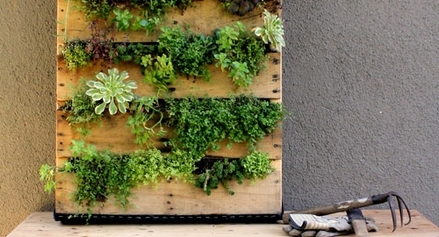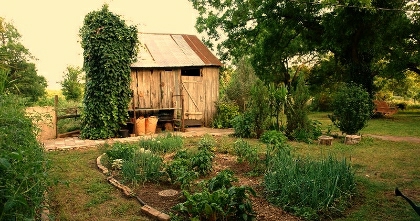For those of you who included ‘create vegetable patch’ in your list
of new year resolutions, then I'm afraid it’s already time to get to
work. Yes, this is the month to prepare those garden plots for the
spring.
In just a few weeks, you’ll be able to plant your asparagus, potatoes,
radishes and all kinds of lettuce and leafy greens. Just a month later,
warm season crops such as tomatoes, peppers, green beans, okra,
black-eyed peas, cucumbers, and all kinds of squash can be planted in.
Pick a garden site that gets plenty of sunlight and is well-drained,
and dig over the soil, adding generous amounts of organic compost.
If you’re not composting all your leaves, kitchen scraps and grass
clipping at home, then don’t despair. There is a myriad of choices
available at your local garden centers.
Some are made from cow and turkey manure, and others from vege-
tative sources such as alfalfa and cotton gin trash. Often you’ll find
composts that blend these animal and vegetable components together.
You should mix generous amounts of compost into the top 6 to 12"
of the garden soil. This will help with moisture retention, aeration,
and drainage. It gives life to otherwise poor soils by adding beneficial
microbes to the soil.
Besides compost, it’s important to add organic, slow release ferti-
lizer. This provides the primary ‘macro-nutrient’ building blocks
for plant growth:nitrogen (N) phosphorous (P), and potassium (K).
Look for fertilizers that also contain micro-nutrients such as magne-
sium, calcium, sulfur and iron. Cottonseed meal and alfalfa meal are
highly effective sources of organic plant food. Both also stimulate
the growth of existing beneficial bacterias.
Other sources include bat guano, earthworm castings, blood meal
and bone meal. If you’re looking for a blended fertilizer with all
the nutrients needed for strong plant growth, Lady Bug’s organic
8-2-4 and Espoma’s Garden Tone are my top favorites.
Time’s getting short and spring garden season is just around the
corner. It’ll be here before you know it.
Happy Gardening Everyone!




 Visit the website: www.itsaboutthyme.com
Visit the website: www.itsaboutthyme.com